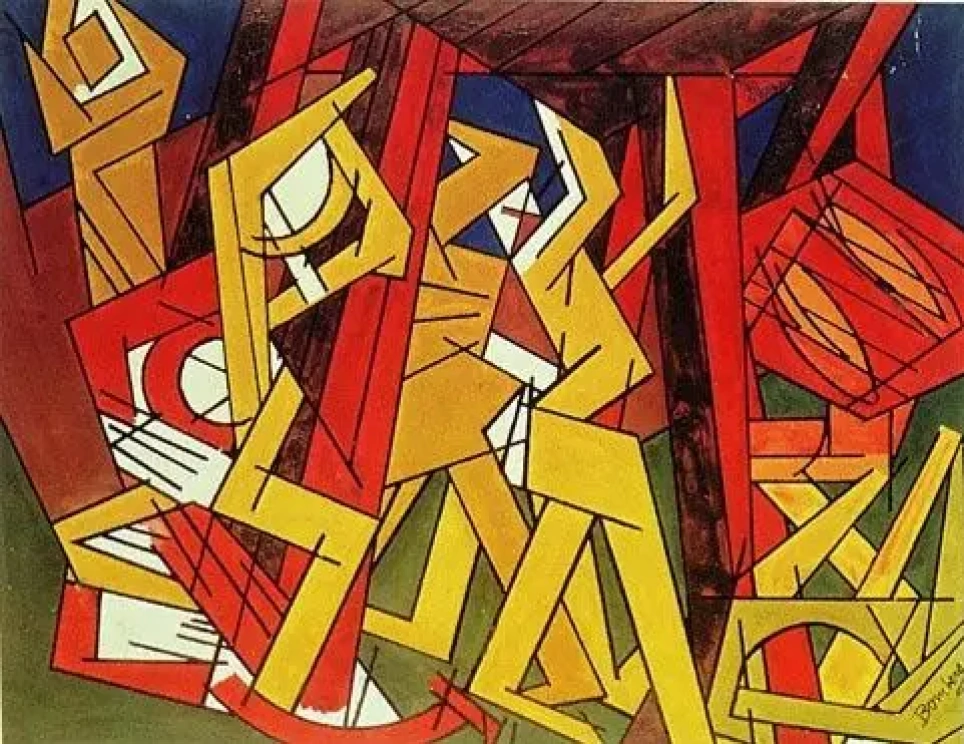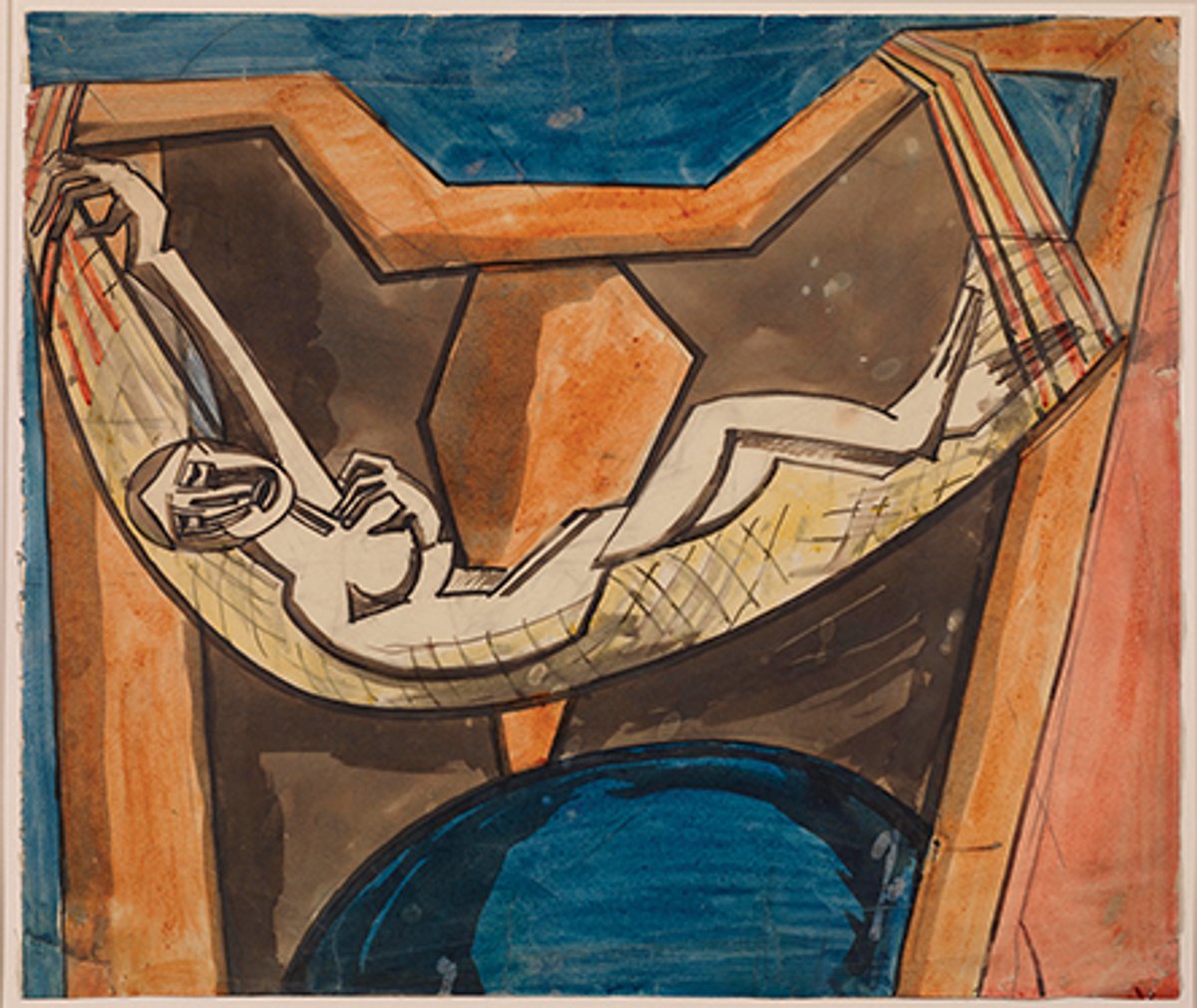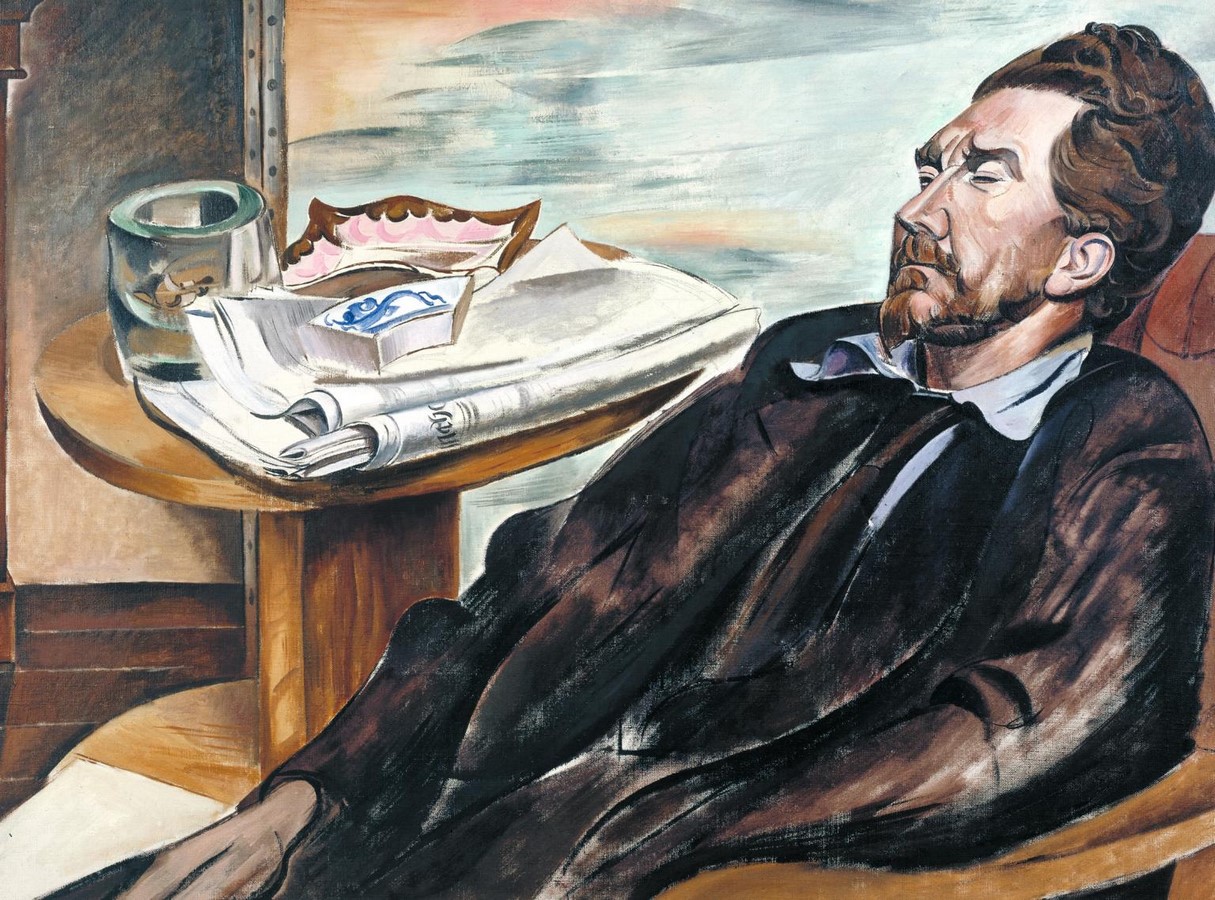Vorticism: The Electric Heart of British Modernist Art

Britain's audacious and indigenous response to the avant-garde movements that swept through Europe in the early 20th century was vorticism. Vorticist art exploded with geometric abstraction, mechanical vigor, and graphic rebellion, despite its brief existence (1914–1917). It combined aspects of Futurism and Cubism, but it was distinguished by its peculiar emphasis on the vortex, which is a metaphor for dynamic force that is frozen at its maximal.
The Origins of Vorticism
In partnership with poet Ezra Pound, Wyndham Lewis founded the organization.
The first issue of the journal BLAST marked the official beginning of the publication in 1914.
The place is in London, England.
Origin of name: Pound came up with the term to describe the idea that all artistic creativity is propelled by a strong, energetic center known as the "vortex."
In response to the Bloomsbury Group's Omega Workshops' excessive ornamentation and Impressionism's alleged softness, vorticism developed. It sought to achieve something more rigid, aggressive, and mechanical, drawing inspiration from the mathematical fragmentation of Cubism and the kinetic preoccupation of Futurism.
Core Philosophy and Aesthetics

Edward Wadsworth, Vorticist Study, 1914.
What Is Vorticist Art?
Vorticist art is:
Sharp angles, broken surfaces, and dynamic structure are examples of abstract and geometric designs.
Modern cities and the energy of machines serve as inspiration for the mechanical and industrial fields.
It symbolizes frozen movement—energy that has stalled at its peak—while remaining active.
Nature, emotion, and organic curves are rejected by anti-naturalistic people.
The Vortex as Symbol
The vortex is the storm's eye, a stationary point from where all movement originates. The Vorticists interpreted it as:
The role that artists play in contemporary society.
A restrained burst of imagination.
An remedy to disorder through organization.
Key Artists and Works
Wyndham Lewis
Wyndham Lewis's roles include founding BLAST, writing, editing, and painting.
Style: Compositions that are heavily layered and have harsh geometry.
Notable Work: Robotic figurines and industrial force created in a workshop between 1914 and 2015.
Henri Gaudier-Brzeska

Sculpture was the medium.
Work: Ezra Pound's Hieratic Head (1914), a blocky bust in the Cubist style.
Note: His brief career had a profound influence; he was killed in World War I at the age of 23.
Helen Saunders

Helen Saunders’s Hammock (around 1913-14); after the disappearance of Vorticism.
Among the rare Vorticist women.
In pieces such as Composition in Blue and Black, she employs dynamic energy and angular abstraction.
David Bomberg

Vision of Ezekiel 1912 David Bomberg 1890-1957
Style: Vorticism had an influence on him, but he eventually separated from it.
The Mud Bath (1914) is a well-known piece that features geometric bathers in vivid red and blue.
Jacob Epstein

Rock Drill (1913–1915) by Jacob Epstein
The sculpture Rock Drill (1913–15) represents human subservience to industrial might and features a futuristic humanoid machine on a power drill.
The Magazine: BLAST
-
First published: July 1914.
-
Design: Shocking pink cover, bold typographic layout.
-
Content: Artistic manifestos, fiction, poetry, and visual art.
-
Tone: Aggressively modern, anarchic, rebellious.
-
“Blessed” and “Blasted” lists: Publicly praised or condemned cultural figures.
BLAST gave Vorticists a voice and a stage. However, only two issues were published before the movement collapsed under the weight of war.
Exhibitions and Reception
The Dore Gallery in London hosted the first (and only) Vorticist group show in 1915.
Many times, critics were perplexed or contemptuous.
The impetus was halted when the First World War broke out. Some artists never returned from war, but many did.
Decline and Legacy
Why Did Vorticism End?
During World War I, the movement was ruined.
Personal conflicts amongst members (e.g., Pound and Lewis clashed).
For such profound abstraction, the British audience and galleries were unprepared.
Post-war Attempt: Group X
Lewis and other individuals tried to revive Vorticism in 1920 under the name Group X, but it lacked the previous fervor.
Legacy
British abstraction was made possible by Vorticism, despite its brief existence.
Modernist literature, graphic design, and typography were all influenced.
Reassessed in the latter half of the 20th century, particularly in:
1974: retrospective at Tate Gallery.
Tate Britain, "The Vorticists: Manifesto for a Modern World," 2011.

Ezra Pound (1939) by Wyndham Lewis
Vorticism and Literature
Despite its significant literary connections, Vorticism was essentially visual: Poetry theory and impressionism were introduced into the Vorticist movement by Ezra Pound. Even though he wasn't a part of the movement, T.S. Eliot was impacted by its spirit and images. Wyndham Lewis: Frequently aggressive and sardonic, Lewis wrote novels, essays, and art criticism.
Conclusion: The Still Center of the Storm
The conflict between chaos and control, motion and motionlessness, and man and machine is captured in vorticist art. Despite its brief existence, the movement had a profound impact on British modernism and ignited a flame of literary and artistic culture.
It demonstrates the strong impact that even the smallest artistic revolutions can have.
Join our classes to enhance & improve your memory skills and let your child unlock the power to retain information from every moment of his/her life!

